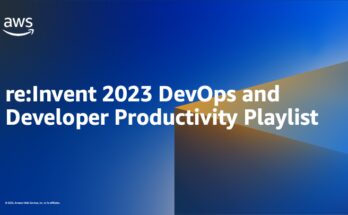A CloudZero survey credits engineering teams with keeping cloud costs under control, but there’s still some room for improvement.
A survey of 1,000 U.S. engineering and finance professionals working in organizations with 100 to 9,999 employees, that spent at least $500,000 annually on cloud services from Amazon Web Services (AWS), Google Cloud Platform (GCP), or Microsoft Azure, finds just over half (51%) believe costs are higher than they should be, with 14% of those respondents claiming their cloud costs were way too high.
Conducted by CloudZero, a provider of a platform for managing cloud computing costs, the survey further finds that 81% of respondents said their cloud costs are “about where they should be” when engineering has some level of ownership. The survey also noted that more than half (59%) said their organization now has at least one person dedicated to implementing best FinOp practices to control cloud costs.
In total, 87% said they are able to investigate cost discrepancies in a matter of hours, the survey finds.
Despite those efforts, however, a full 88% said they see significant variance (5–30%) in actual cloud spend versus forecast, but only 43% said cloud costs are a higher priority in 2024 than in the previous year. In fact, well over a third (37%) said cloud costs are less of a concern.
Nevertheless, a full 89% of respondents said a lack of cloud cost visibility has an impact on their ability to carry out their role, with 46% describing that impact as significant. Among the 500 engineers that participated in the survey, 66% report a lack of visibility into cloud costs causing some level of disruption to their work, with 22% reporting high levels of disruption.
Three-quarters (75%) of all respondents noted they fear losing their jobs if cloud costs abruptly surge by 50% or more, the survey finds.
Only approximately a third of respondents said they could accurately allocate cloud costs, with 42% only being able to estimate. More than three quarters (78%) have less than 75% of their cloud spend allocated.
The profit margins enjoyed by cloud service providers suggest there is plenty of room for improvement when it comes to optimizing consumption of cloud services.
Bill Buckley, senior vice president of engineering, said the challenge is that in addition to all the types of cloud services being consumed, costs can be highly variable from one month to the next. Developers also have a natural tendency to over provision cloud resources to ensure applications are always available without appreciating total costs, he added.
The best way to control those costs is to ensure engineering teams armed with the right tools are managing the consumption of those resources, said Buckley.
There may, of course, come a day soon when artificial intelligence (AI) is more broadly applied to rein in cloud costs by, for example, taking more advantage of spot instances to run workloads.
In the meantime, DevOps teams would be well-advised to revisit application workloads running on various clouds to make sure resources are optimally being employed in an era where many organizations as much as possible are trying to maximize existing investments in IT. After all, even in the best of times, it’s only a matter of time before someone from the finance teams starts asking questions that DevOps teams should be able to answer in a matter of minutes.
Filed Under: Blogs, Business of DevOps, CloudOps, DevOps in the Cloud, Doin’ DevOps, Features, News, Social – Facebook, Social – X Tagged With: AWS, cloud costs, devops, engineering teams, FinOps
Secure Coding Practices
Step 1 of 7
14%
Does your organization currently implement secure guardrails in the software development process?(Required)
Yes, extensively across all projects
Yes, but only in specific projects or teams
In the process of implementation
No, but planning to in the near future
No, and no plans to implement
What are the biggest challenges you face in implementing secure guardrails within your development processes? (Select all that apply)(Required)
Lack of awareness or understanding
Technical difficulties in integration
Resistance from development teams
Lack of suitable tools
Cost constraints
Other
Other, tell us more:
How effective do you find secure guardrails in preventing security vulnerabilities in your projects? Rate on a scale from 1 (Not effective) to 5 (Highly effective)(Required)
1
2
3
4
5
To what extent are your secure guardrails automated?(Required)
Fully automated
Mostly automated with some manual processes
Equally automated and manual
Mostly manual with some automation
Entirely manual
What features do you prioritize in a secure guardrail solution? (Rank in order of importance)Ease of integration into existing workflowsComprehensive coverage of security vulnerabilitiesCustomizability for specific project needsMinimal impact on development speedActionable insights and recommendationsSupport for a wide range of programming languages and frameworks
What are your organization’s plans regarding the adoption or enhancement of secure guardrails within the next 12 months?(Required)
Expand the use of secure guardrails to more projects
Enhance the capabilities of existing secure guardrails
Maintain current level of secure guardrail use without changes
Reduce reliance on secure guardrails
No plans related to secure guardrails
What best describes your primary role?(Required)
Security Engineer
DevOps Engineer
Platform Engineer
Security champion on the development team
Software Developer
CISO (or equivalent)
Sr. Management (CEO, CTO, CIO, CPO, VP)
Manager, Director
Other
Δ



